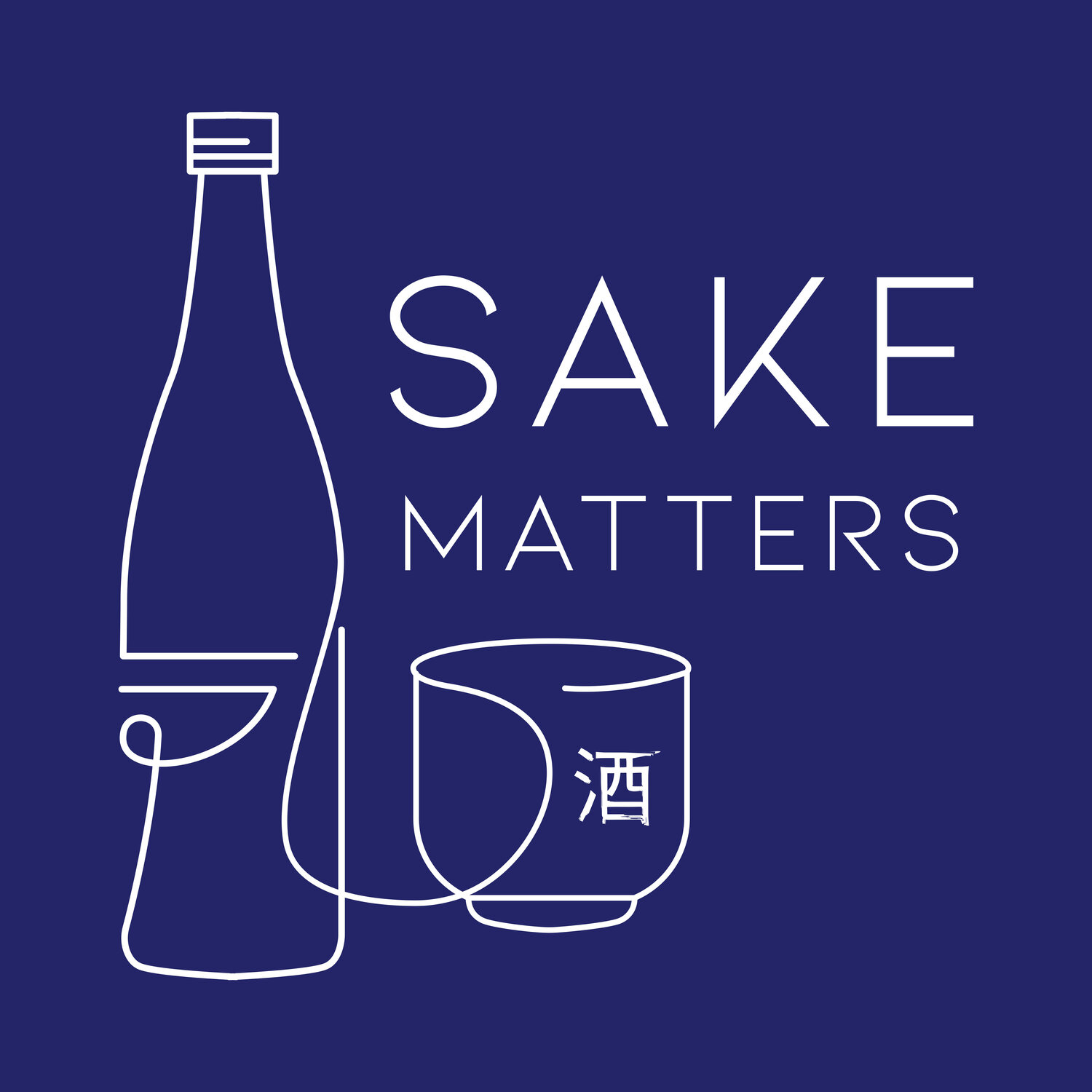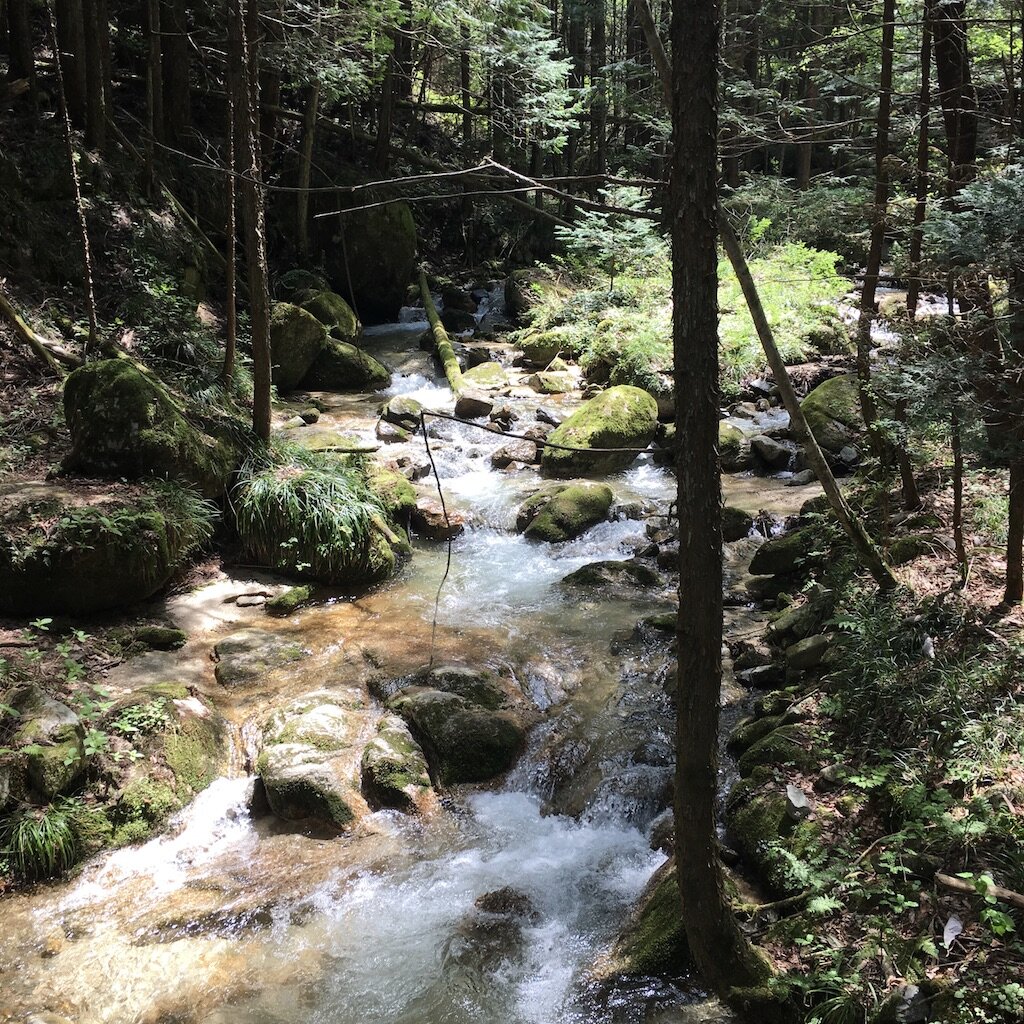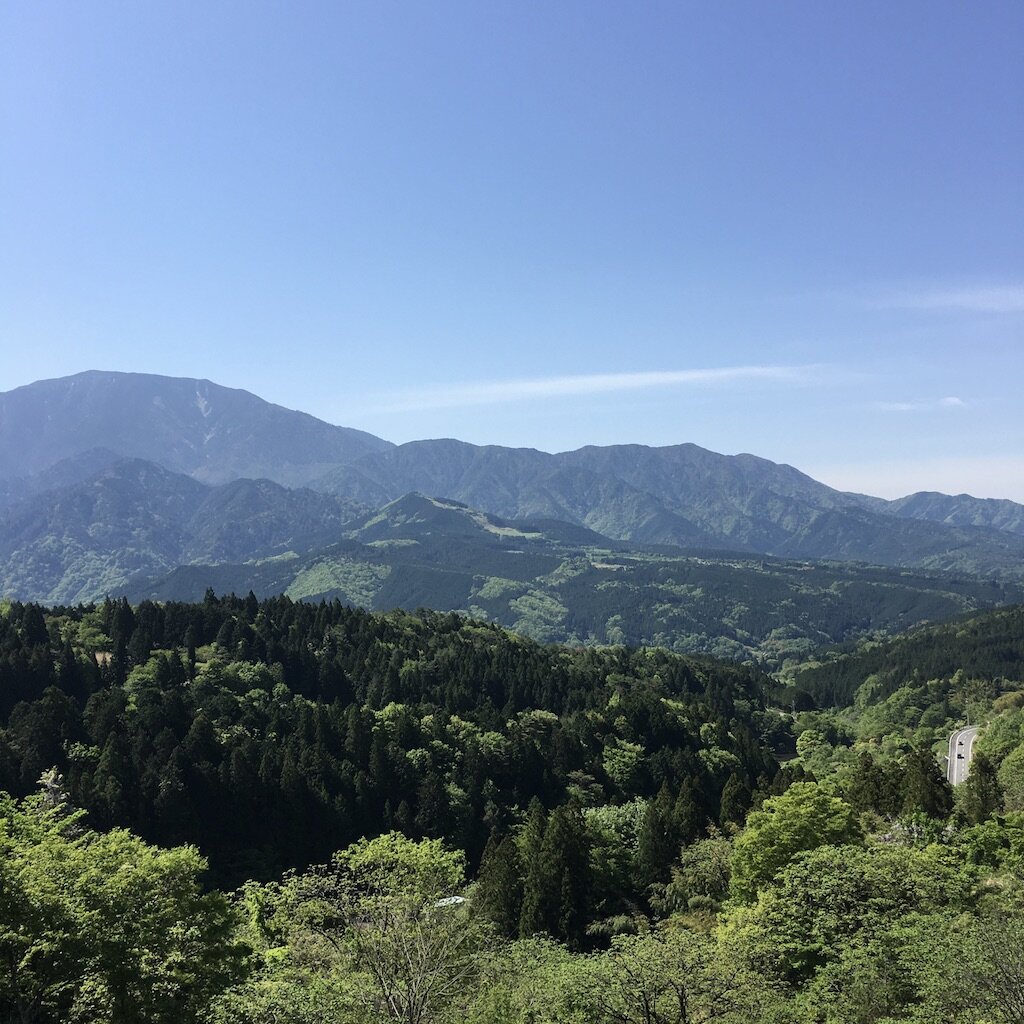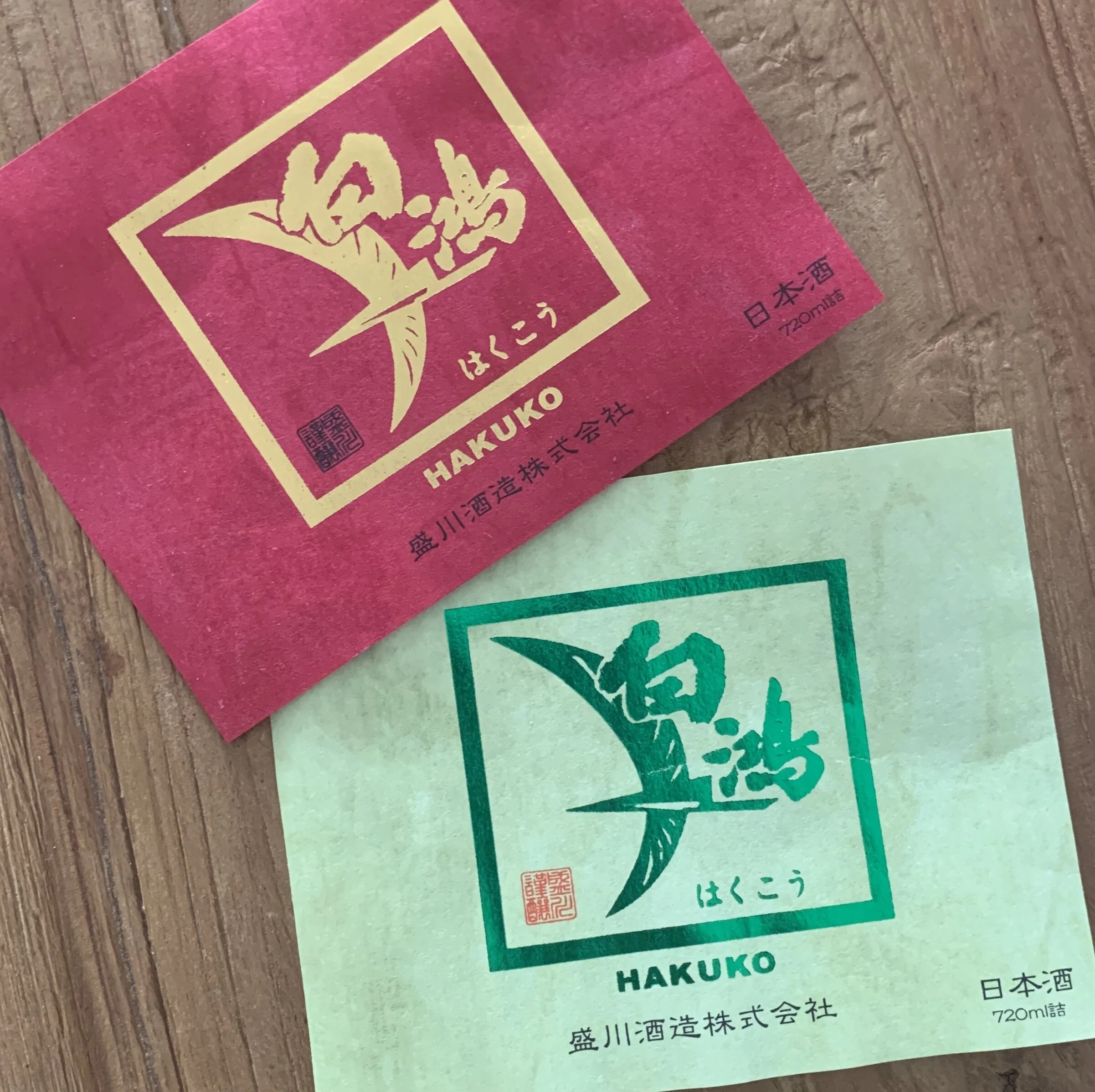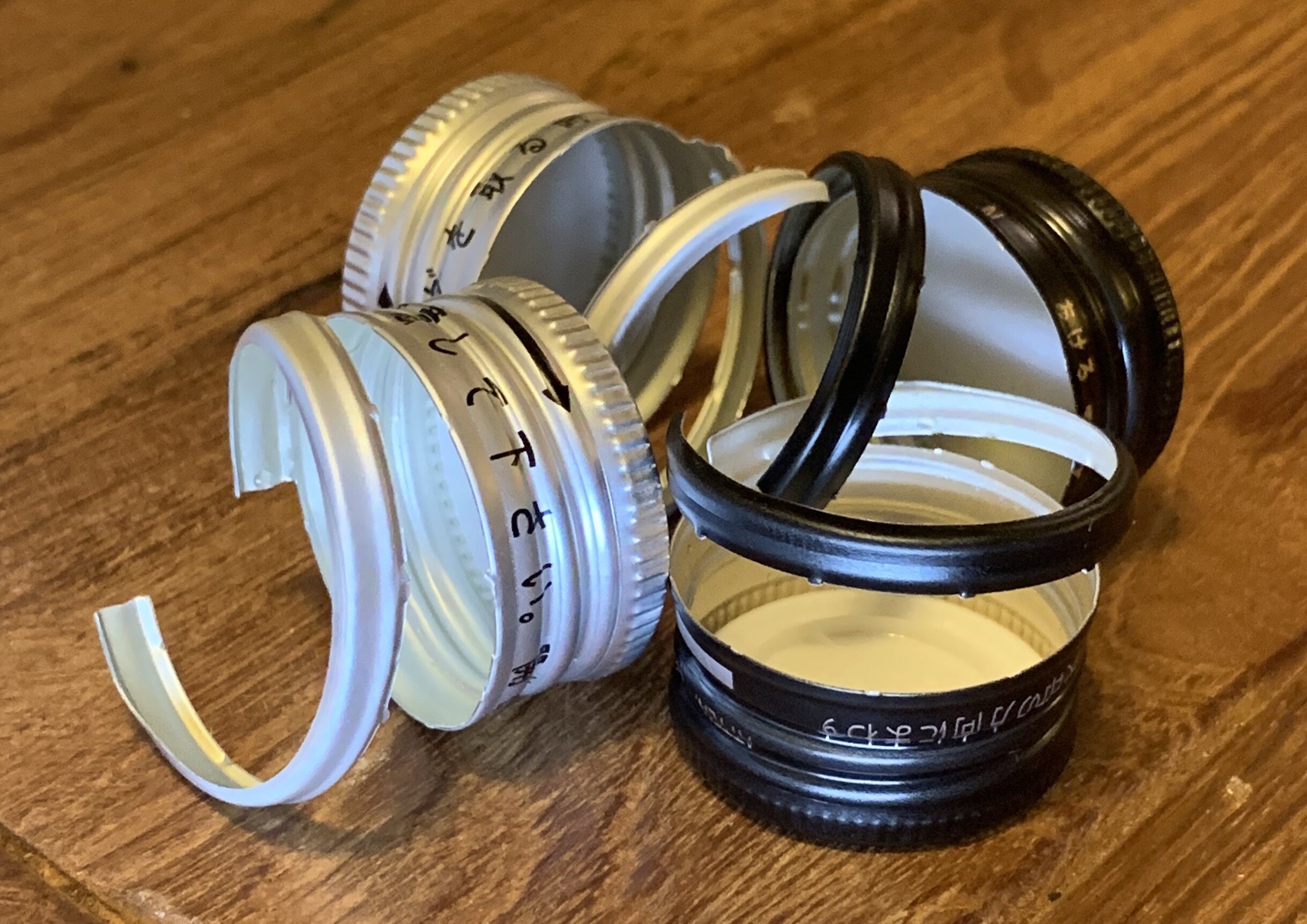HELLO MOTO
Ichi Koji - Ni Moto - San Tsukuri.
Many industry scholars agree that in making Sake, first in importance is the Koji, next is the yeast starter ‘Moto’, and third comes the fermentation ‘Tsukuri’. In this article I’m leapfrogging Koji for now to take a look at Moto.
Having experienced a late spanner in the works (namely me not doing my homework) in my last article, this week I stumbled on a new experiment that allows me to put up two Sakes, mano a mano, with just one significant difference between them: their Moto.
‘Peaks’ (left) is Kimoto; ‘Dots’ (middle) is Yamahai; ‘Balls(!)’ (right) wasn't available for purchase
As you can see, they line up almost identically:
Rice is the same, local Kinmon Nishiki (one of the many Nishikis out there) from Nagano
Yeast is the same - Kumamoto, which is in fact more commonly known as the legendary #9 yeast, for 50 years the most widely used yeast in Ginjo Sake brewing
Seimaibuai of 80%, so both Sakes are of course Junmai (it’s always interesting to try a ‘lightly’ polished Sake made with a Ginjo yeast)
ABV are both 17%, so nothing to see here
But….nihonshu-do, amino acid levels and acidity levels all vary, and this can only be attributable to the Moto’s early influence on the final Sakes
Even the price is the same for a 720ml at HK$280, and so both equally heavily marked up by the purveyors in Hong Kong (just sayin’)!
All in all then, this really does just boil down to what impact the two similar yeast starter methods have had on the resulting Sake.
So what of them exactly? Let’s keep it simple. Kimoto has been around for centuries, and like Yamahai is an incubation period that precedes the main fermentation (the ‘Moromi’). In both cases the intention is to create a thriving yeast population for the Moromi, so that stable starch to sugar and sugar to alcohol fermentations can take place.
Unlike today’s modern and much preferred Sokujo-moto (‘fast’) method which only take two weeks, both Kimoto and Yamahai rely on naturally occurring lactic acid bacteria to get involved in the yeast fermentation starter. And nature takes its time, meaning an additional two weeks are required.
These bacteria take control of the Moto - a mix of water, steamed rice and Koji (rice onto which Koji spores have been propagated) - and essentially eliminate any other microorganisms from the vat before consuming themselves and leaving a sanitized environment for the yeast cells (these days purchased from official sources and added by the brewer whereas back in the day these too would be wild) to go nuts and multiply.
The key difference is that for the Kimoto process, brewery teams are required to pummel the rice with oar-like poles (‘kai’), essentially puréeing the Moto as this was deemed to jumpstart the mix into action.
Yamahai came along in 1909, pioneered by Mr. Kinichiro Kagi who took a different look at all the Yama-oroshi (‘pole ramming’) going on and found that the same result - a yeast rich soup - could be achieved by a small cranking up of the water temperature and a little more of it.
Thankfully, Kimoto and Yamahai remain alive and well today but sadly only account for less than 1% of all Sake produced in Japan.
So what am I drinking? The two Sakes (and many more in fact) are part of what is known as the Concept Workers Selection (CWS), and I really like what they’re doing.
The brewers’ concept lies in a collective agreement that Sake isn’t about the stats on the paper, like those I have laid out above. It’s about what’s in the glass and how it tastes to you, to me, to whoever is lucky enough to drink it. The expression of each Sake should not be mentally predetermined by the yeast type, the rice varietal and the various other measurements available and legally required to be included on the label.
All CWS Sakes are purely a result of the region, its agriculture, the farmers’ and the brewers’ own philosophies, building Sakes that aren’t from a calculated recipe. And they’re mindful of avoiding the trap of brewing what is currently trending, actively wanting to differentiate away from the glut of (very good, yes) sophisticated Sakes flooding the market.
Amongst the twenty or so members of the Selection, their Sakes tend to be made with local yeasts and rices, milled to comparatively higher Seimaibuai (80%, 89%), and even use some flower yeasts. All have a raison d’ être, be it historical, cultural or attitudinal. It’s all quite captivating, a wholesome antidote to what’s on the news in 2020.
This is what I like. But I’m not a Sake revolutionary. I like the good high-end stuff too but I am a traditionalist at heart, so a back to basics ethos focused on raw materials and emotional appeal rather than end result is where I’m going to be.
And what about those labels, just look at them! Before even checking the price or just what CWS is all about, these were in my basket. OK, this doesn’t fall into my traditionalist camp but you can’t argue with the stand out on shelf that’s been achieved here. Made from an uncoated, ‘rustic’ paper stock, they feel a little less modern than they look. Call me inconsistent, it doesn’t matter, I like them.
Each brewery’s products has a dedicated designer involved with the label. Shinsuke Nakayama is responsible for these labels
The icing on the cake is that the Yukawa Brewery that produces these Jurokudai Kurouemon Sakes is located in Nagano Prefecture, a glorious part of Japan, not far from the charming Nakasendo Trail. Apparently it’s the Sake brewery ‘closest to the stars’, being at an altitude of 936m, ensuring a brutal brewing season that requires the Moromi to be gently warmed amidst -18°C winters.
This isn’t really Sake heartland, in fact it’s a massively forested area, not renowned for rice production yet the brewery has been going for 370 years and 16 generations. And this is where the concept comes to life with the story that CWS feels needs to be told:
Sell wood, buy rice and make sake
And this is what they did. Was it worth it? I’m going to finally find out.
The Yamahai (‘dots’) lives up to its billing and is wild and acidic, it even has a little fizz to it, which calms down after a while as the bottle settles. There’s a nuttiness to it, that slightly bitter nutty skin, probably almonds, and it’s veering towards an unsweetened marzipan.
Kimoto (‘peaks’) is instantly recognisable as more tart. It’s noticeably dry, and generally all round lighter, by which I mean it’s cleaner, particularly at the finish, and has less umami than the savoury custard mouthfeel of the Yamahai.
They’re both really interesting and it’s great fun to have such a line up to taste without any smoke and mirrors in the brewing process. I like them both, a real distraction from the wall of Ginjo staring back at me from the shelves in the store.
In short it feels like Kimoto is the posh cousin of the more bumpkin-like Yamahai. That sounds a bit harsh perhaps, but I guess is how I should be feeling about it. All those books I’ve been reading and Zooms I’ve been watching haven’t just brainwashed me into thinking this, it is indeed the reality but big thing now is I’ve properly experienced it.
My first science experiment for 30+ years complete! And I conclude it has definitely been the most enjoyable.
FOOTNOTE:
Check out the other participating CWS breweries here, and their mesmerizing label designs: www.concept-workers.com/product-list/
QUICK GLOSSARY:
Koji: Rice that has been inoculated with Koji-kin mold
Moto: Small starter batch of Sake that is used to grow a thriving yeast population before it is added to the main larger fermentation tank
Tsukiri: The processs of making Moromi but also often interchangeable with the word Moromi itself
Ginjo 吟醸: Sake made from rice at a polishing ratio below 60%
Seimaibuai: The percentage of rice remaining after the polishing process compared to its original weight (so a 60% seimaibuai reflects that 40% has been polished away)
Junmai 純米: Sake made using only rice, water, yeast and koji – no added alcohol (純: pure; 米: rice)
Nihonshu-do: The scale used to measure the specific gravity of Sake. The higher the positive number, the drier the Sake (“higher is drier” - thanks John Gauntner), and low negative numbers are representative (generally) of sweeter sake. In English, this is the SMV (Sake Meter Value)
Kimoto 生酛: Kimoto is a style of Sake that uses the original yeast starter method laboriously created using long paddles to promote natural lactic acid development
Yamahai 山廃: Yeast starter method developed after Kimoto allowing for natural lactic acid production but without the labour of Kimoto’s long paddles (takes 4 weeks)
Moromi: The main fermenting ‘mash’, comprised of a mixture of yeast starter, koji, steamed rice and water
Sokujo Moto: Modern “fast” yeast starter method whereby lactic acid is added directly to the yeast starter allowing the process to finish in 2 weeks
LINKS:
Yukawa Sake Brewery co.,ltd.
www.yukawabrewery.com/en/
1003-1, Yabuhara, Kisomura, Kisogun, Nagano, Japan 399-6201
